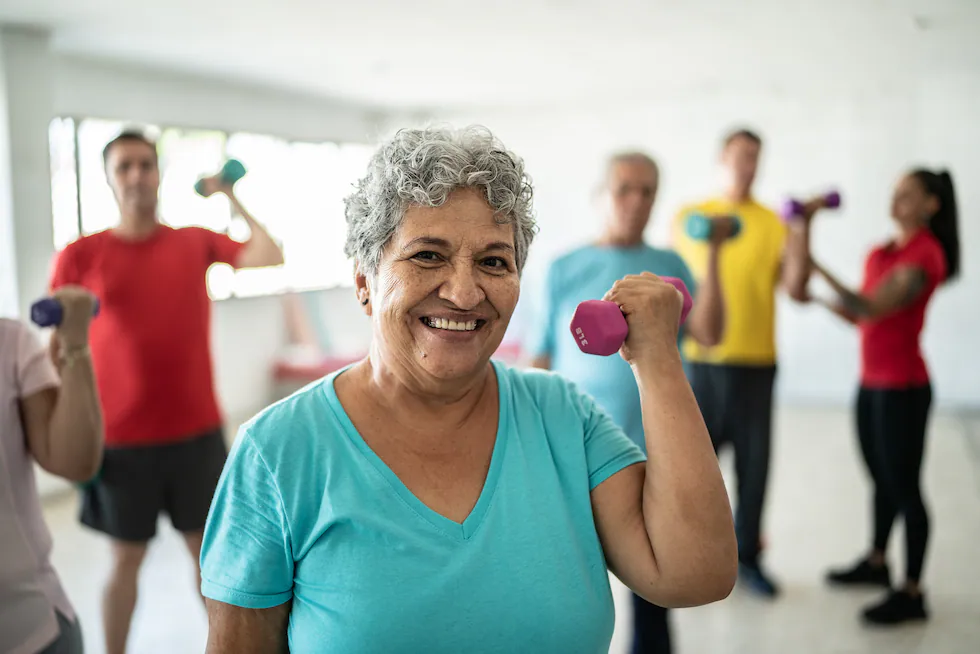
Preventing falls in the elderly involves exercising by combining strength and balance
Activities such as tai chi and functional training reduce the risk of falling by up to a third for people over 75 years of age
One of the most endearing characters that cinema has ever offered us is the elderly Carl Fredicksen, who in the film Up (2009) is forced to move and discover – through Russell, the boy scout – all the potential and energy he still had to keep himself active. We must remember that the human body needs movement. And unfortunately, with age, physical activity decreases, decreasing levels of strength, coordination and balance. That is why when we think of an elderly person, we always associate them with a fragile person, who falls easily; another animated example of this stereotype is the grandfather in the series The Simpsons.
However, this image is wrong. One of the examples that illustrates how the body of an elderly person can be trained and improve their quality of life is that of Charles Eugster, a retired dentist who began training at 85 years old after “looking in the mirror one morning and seeing that he didn’t like what he saw.” Our body is like a bicycle that, if it stops rolling for a long time, will lose pressure in the wheels, the gears and chain will rust, and its stability will become unbalanced. The lack of activity in adults and the elderly is what deteriorates their capacities, but that does not mean that they cannot move or stop enjoying physical activity.
The scientific evidence is clear in this regard, the role of physical exercise is essential to significantly reduce the risk of falls and improve fracture prevention. Falls are reduced by 23% when exercising, and by 34% when carrying out multi-component functional strength activities – such as squats and getting up from a chair – and balance, varying the position of the centre of gravity. Balance work through activities such as tai chi allows falls to be reduced by 19%. But the benefit is not limited to preventive data, as it produces improvements in static and dynamic balance, but also allows for greater confidence when walking, improving the quality of life.
Combined programs are the most effective in preventing falls and the risks that can occur at home. In addition, it is also recommended to integrate activities that allow the user to modify the environment in order to adapt to situations outside of their daily life. The key lies in the combination of strength exercises – resistance exercises with self-loads and weight – and balance – tai chi , functional training or jumping exercises – as the most effective in preventing falls. It should be noted that the impact is greater in women, with a greater benefit from exercise in preventing falls and fractures.
Studies have also highlighted the importance of other types of activities that have benefits in preventing falls. On the one hand, rhythmic exercises using steps and dynamic activities produce an improvement in functional balance. Likewise, core strengthening exercises —such as planks and the use of stability balls— are useful in improving strength in the elderly, although they do not improve functional balance as much as dynamic activities.
On the other hand, strength training is essential for improving muscular endurance, increasing muscle mass and the functional capacity of muscles and joints. Exercises that involve two or three one-hour sessions a week, with one to three sets of 8 to 15 repetitions at 30-70% intensity, including self-loading, sitting in a chair and getting up —with and without weight—, climbing stairs with moderate loads, moderate weight training —with resistance machines— and walking at moderate intensity, could reduce falls by 21% in people over 65 years of age.
The keys to gaining confidence
We cannot forget the psychological component, which can be promoted through exercise to reduce the fear of falling. To do this, proprioception work is essential to improve stability and significantly reduce the risk of falls, helping to improve coordination, posture, dynamic balance, changes of direction in everyday life or balance on one leg. In relation to the zero risk of falls, it is noteworthy that exercise in water is another alternative that has demonstrated benefits in muscle strength, balance and flexibility, so it is another collective activity that can be done twice a week with 20-30 minute sessions where static and dynamic balance in water is worked on —non-impact exercise—, as well as with specific materials such as gloves or fins that allow focusing on strength work of large muscle groups —upper and lower body—.
Finally, it is worth noting that older people also need to improve their motivation and psychosocial components, with group activities that improve their balance, coordination and strength, or with sports proposals adapted to the needs of older people, such as walking football or walking basketball. These are a good alternative that works globally on all the components of physical, mental and social health.
For all these reasons, we should think of our elders as long-lived trees with strong, deep roots that maintain a stable, upright trunk over the years. With movement and physical activity, older people will be able to enjoy a better quality of life, with less risk and fragility in their daily activities.
ENFÓRMATE is the space in EL PAÍS SALUD where we will talk about those aspects related to physical activity, sport and physical and mental health. Physical activity and sport are part of the culture of all civilizations and play a fundamental role in the health of society at all levels, both physically and mentally, at all ages, from childhood to old age, in both men and women. From the Sciences of Physical Activity and Sport, we have tried to advance scientific knowledge about the importance of movement and physical exercise on the body, as well as the processes that explain why certain adaptations, modifications or changes occur at different levels (physiological, anatomical, motor, emotional or cognitive). For all these reasons, this space seeks to find scientific explanations that support and justify the very beneficial reasons for physical activity and sport. Likewise, we will try to discuss and refute certain myths or false beliefs existing in society on specific issues of physical exercise and health.







1 thought on “Preventing falls in the elderly involves exercising by combining strength and balance”